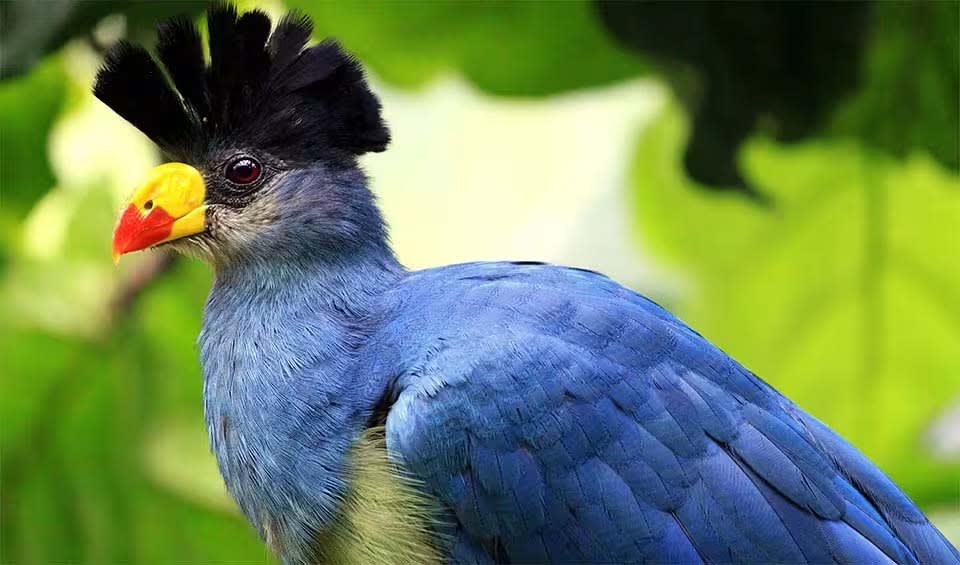A strikingly beautiful bird, known for its vibrant colors and impressive size, making it the largest species in the turaco family. It’s primarily found in the forests of West and Central Africa, stretching across a wide range that includes countries like Cameroon, Uganda, and the Democratic Republic of the Congo.
One of the Great Blue Turaco’s most noticeable features is its coloration. It boasts a vivid blue body with a contrasting yellow and black tail and a greenish bill. The head is adorned with a noticeable crest of blue feathers at the base and tipped with white. This crest can be raised or lowered depending on the bird’s mood, adding an expressive quality to its appearance.
Despite its size and bright colors, the Great Blue Turaco is a shy creature that can be elusive. It usually stays hidden among the dense foliage, making it a treat for birdwatchers to spot one in the wild. Its call is another characteristic trait, consisting of a series of bubbly and gurgling sounds that carry well through its forest home. These vocalizations play a role in communication, especially during the breeding season, and in maintaining territory boundaries.
A fun fact about turacos, in general, is that they possess unique pigments in their feathers. The Great Blue Turaco, for instance, gets its blue coloration not from the reflection of light but from a rare pigment called turacoverdin. Interestingly, when the feathers of a turaco are crushed, they can stain the fingers blue, a feature historically used by local tribes for body paint and dye.
Distribution
 Angola
Angola Benin
Benin Burundi
Burundi Cameroon
Cameroon Central Af. Rep.
Central Af. Rep. Congo-Brazzaville
Congo-Brazzaville Côte D’ivoire
Côte D’ivoire DR Congo (Kinshasa)
DR Congo (Kinshasa) Equatorial Guinea
Equatorial Guinea Gabon
Gabon Ghana
Ghana Guinea-Bissau
Guinea-Bissau Guinea
Guinea Kenya
Kenya Liberia
Liberia Nigeria
Nigeria Rwanda
Rwanda Sierra Leone
Sierra Leone South Sudan
South Sudan Sudan
Sudan Tanzania
Tanzania Togo
Togo Uganda
UgandaAnything we've missed?
Help us improve this page by suggesting edits. Glory never dies!
Suggest an editGet to know me
Terrestrial / Aquatic
Altricial / Precocial
Polygamous / Monogamous
Dimorphic / Monomorphic (size)
Active: Diurnal / Nocturnal
Social behavior: Solitary / Pack / Flock
Diet: Carnivore / Herbivore / Omnivore / Piscivorous / Insectivore
Migratory: Yes / No
Domesticated: Yes / No
Dangerous: Yes / No




